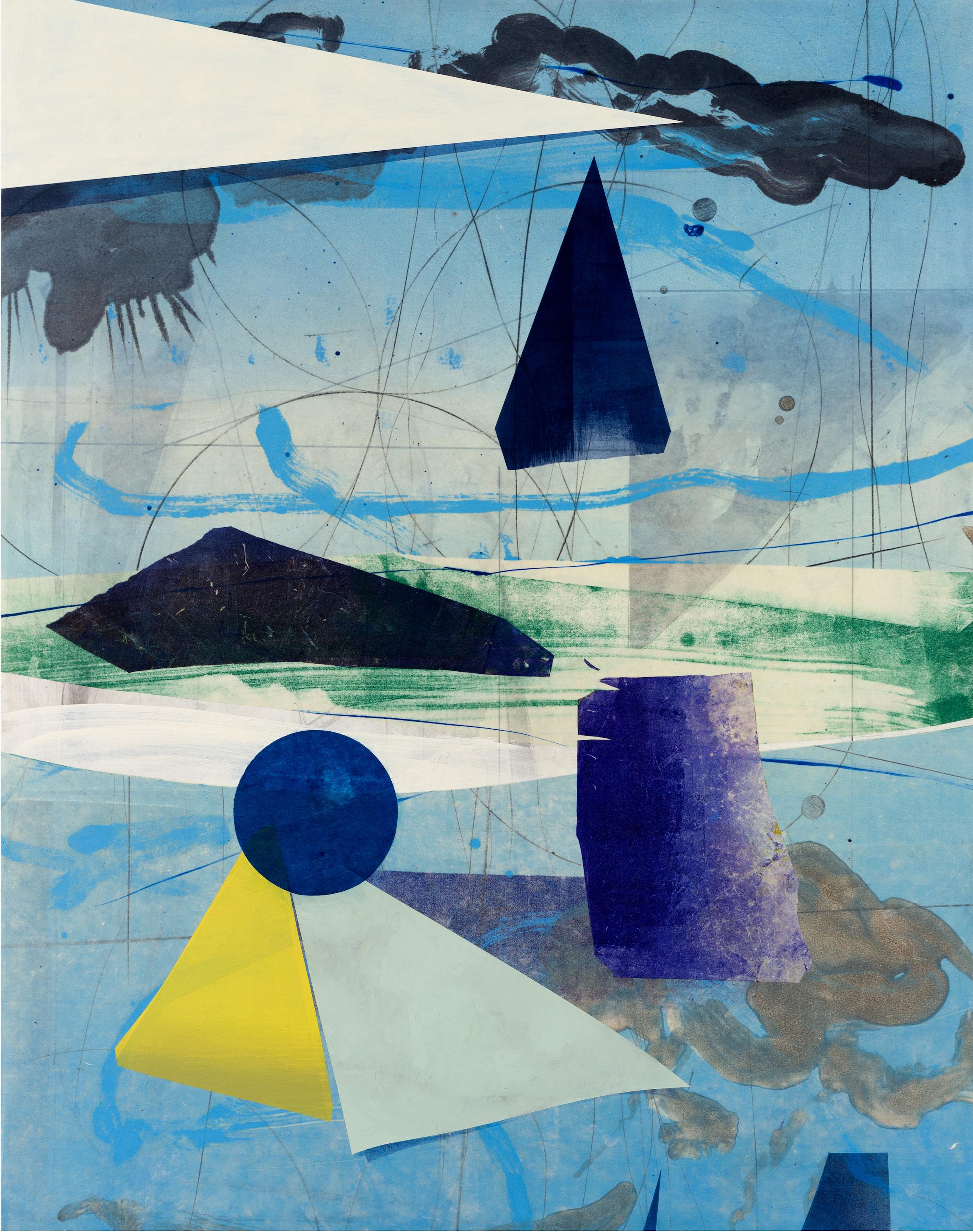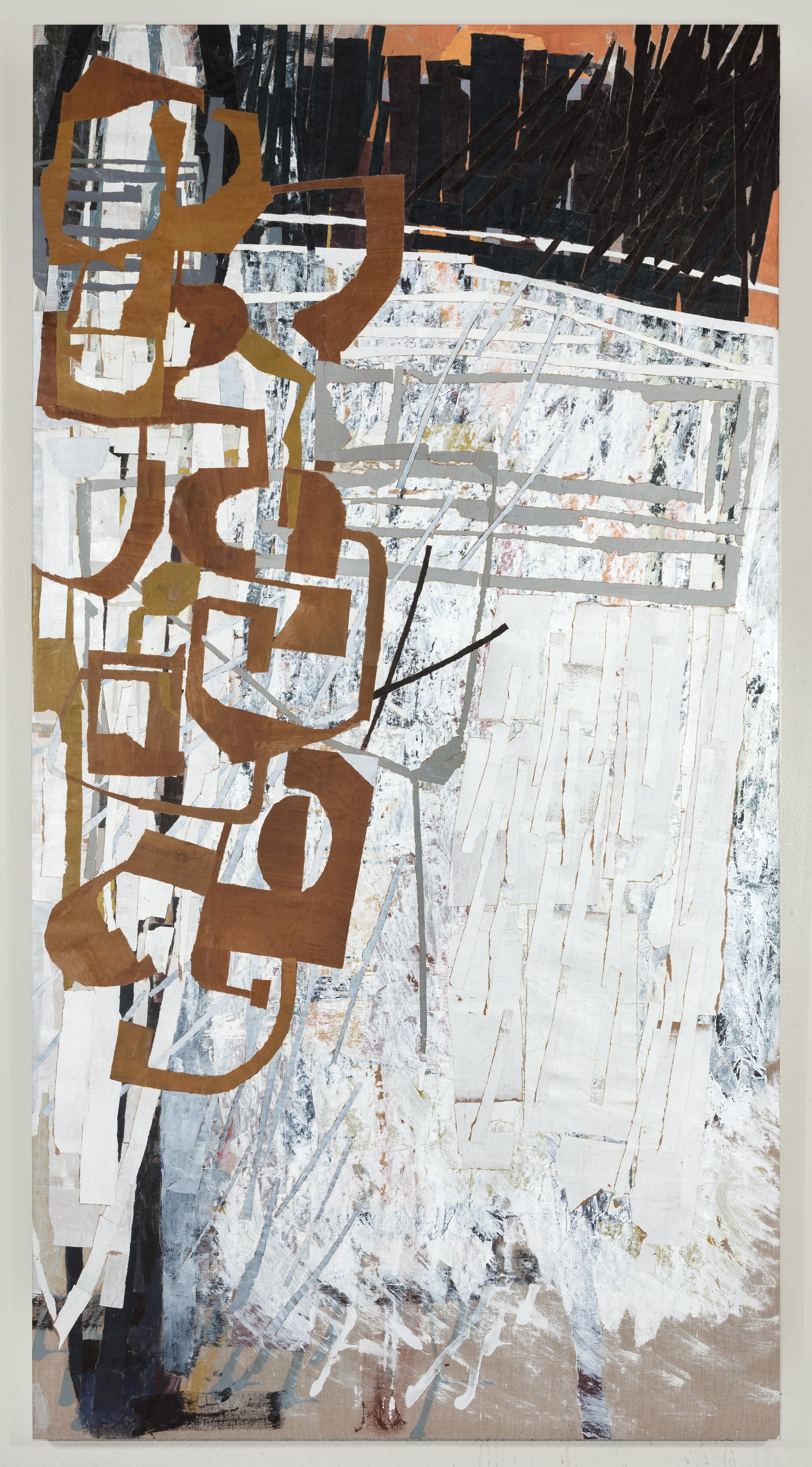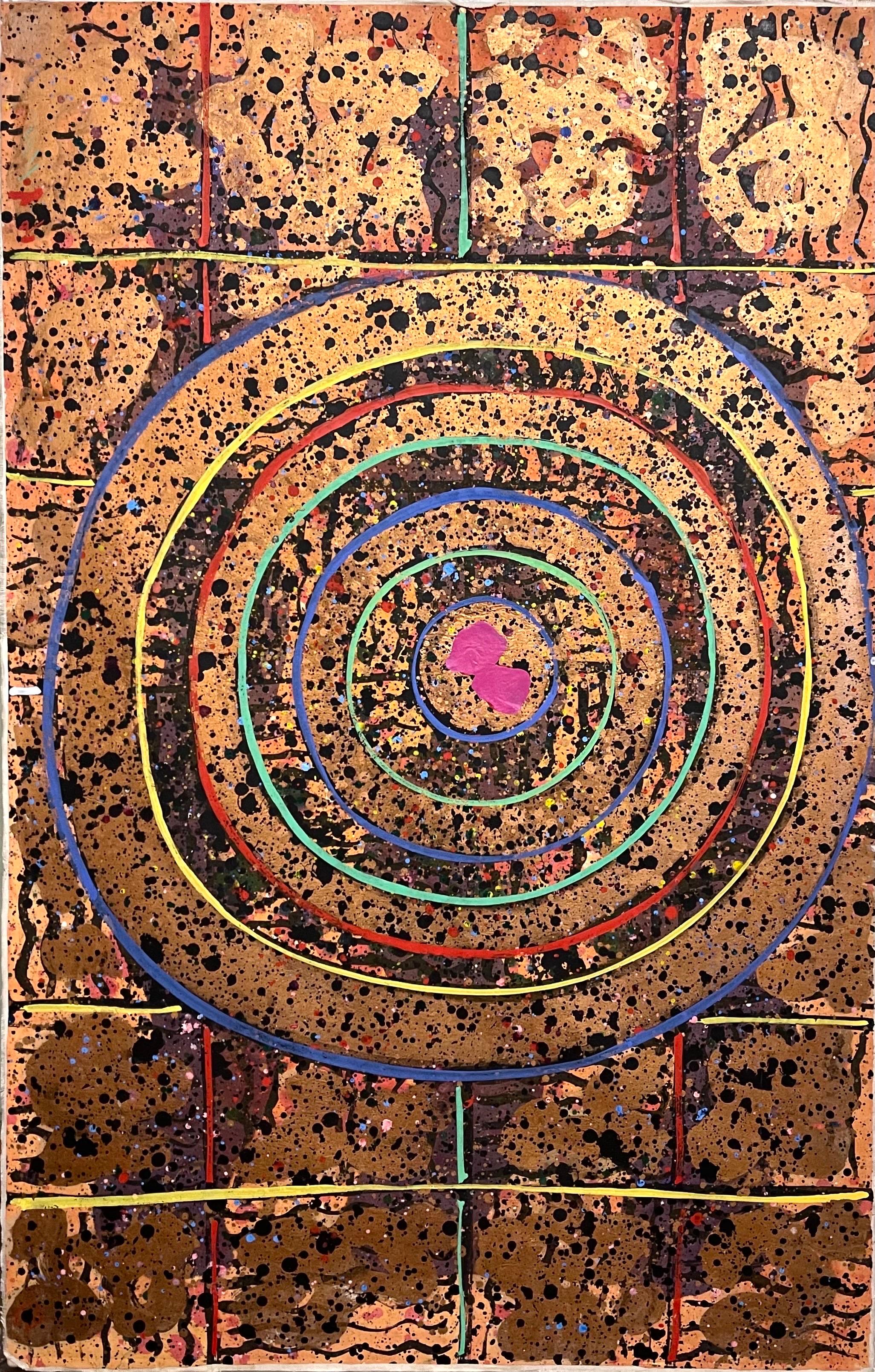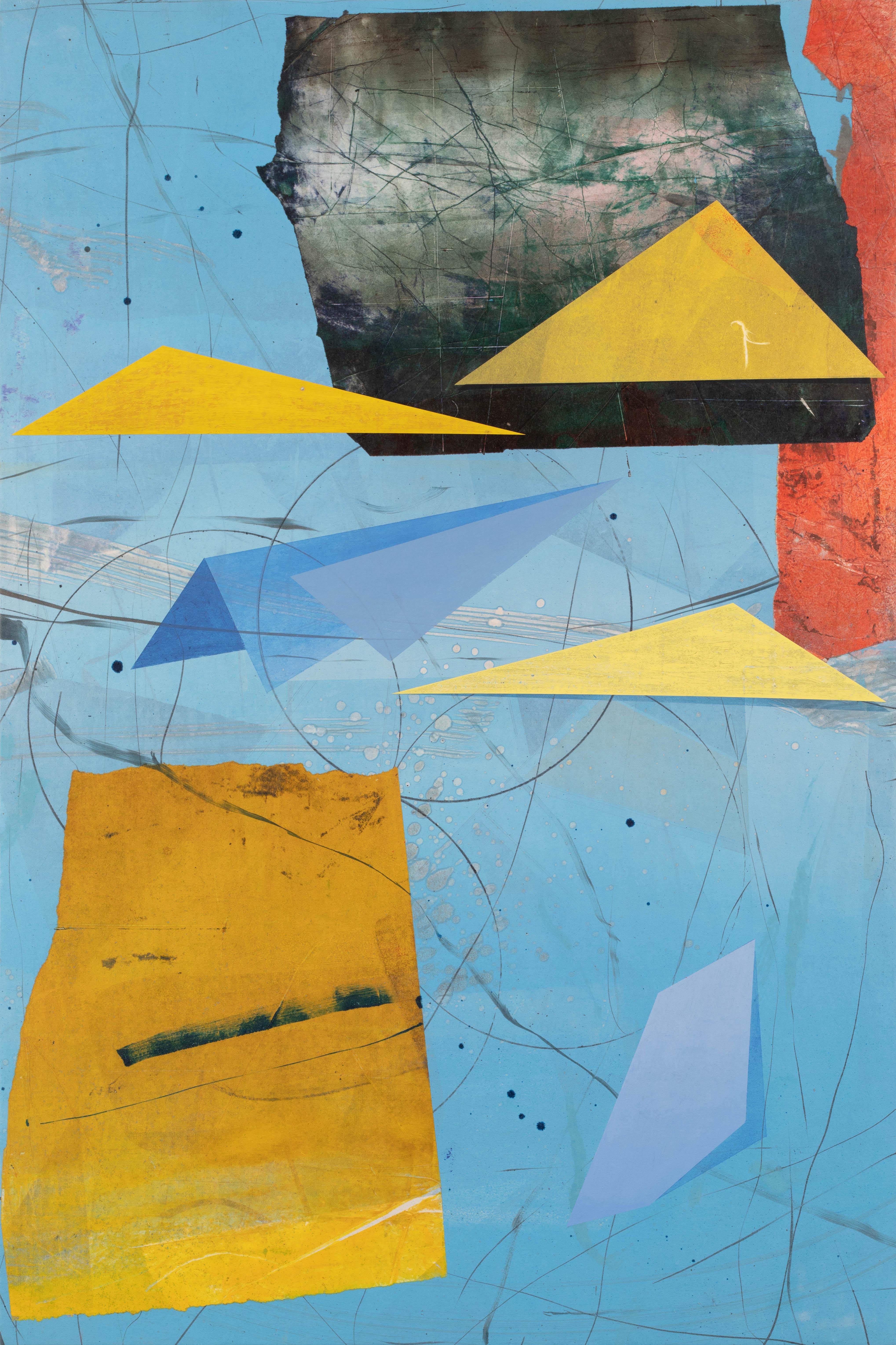David Hare"Cronus Hunting" Acrylic and Paper Collage on Linen Abstract Composition 1967
1967
About the Item
- Creator:David Hare (1917-1992, American)
- Creation Year:1967
- Dimensions:Height: 68 in (172.72 cm)Width: 53 in (134.62 cm)
- More Editions & Sizes:Original work Price: $75,000
- Medium:
- Period:
- Condition:
- Gallery Location:New York, NY
- Reference Number:1stDibs: LU1841214417732
David Hare
David Hare, a surrealist and Abstract Expressionist sculptor and photographer, was born in New York City on March 10, 1917. From 1936–37, he studied biology and chemistry at Bard College in Annandale-on-Hudson, New York. Hare had no formal training in art but began experimenting. He took up photography in the 1930s and by the end of the decade was working in color. The Walker Galleries in New York exhibited his photographs in 1939. From 1941–44, Hare founded and edited the surrealist magazine VVV with André Breton, Marcel Duchamp and Max Ernst. Peggy Guggenheim presented solo shows of Hare's work in her The Art of This Century Gallery from 1944–47. In 1948, he was a founding member, together with William Baziotes, Robert Motherwell and Mark Rothko, of The Subjects of the Artist school in New York and Hare, became friendly with Jean-Paul Sarte. Hare died on December 21, 1992, in Jackson.
- ShippingRetrieving quote...Ships From: New York, NY
- Return PolicyA return for this item may be initiated within 3 days of delivery.
- "Erotic #1 (Cronus Sex)" Acrylic and Paper Collage on Linen Canvas AbstractBy David HareLocated in New York, NYDavid Hare Erotic #1 (Cronus Sex), 1970 Acrylic and paper collage on linen 68 x 51 inches “Freedom is what we want,” David Hare boldly stated in 1965, but then he added the caveat, ...Category
1970s Abstract Abstract Paintings
MaterialsLinen, Paper, Acrylic
- "Cronus Elephant" Abstract Composition Acrylic on Linen by David HareBy David HareLocated in New York, NYDavid Hare Cronus Elephant, 1975 Acrylic on linen 82 x 60 inches “Freedom is what we want,” David Hare boldly stated in 1965, but then he added the caveat, “and what we are most afr...Category
1970s Abstract Abstract Paintings
MaterialsLinen, Acrylic
- "Cronus Descending" Acrylic on Linen Abstract Surrealist Painting by David HareBy David HareLocated in New York, NYDavid Hare Cronus Descending, 1971 Acrylic on linen 64 x 46 inches “Freedom is what we want,” David Hare boldly stated in 1965, but then he added the caveat, “and what we are most ...Category
1970s Abstract Abstract Paintings
MaterialsLinen, Acrylic
- "Cronus Asleep in the Cave" Large Acrylic Abstract Composition by David HareBy David HareLocated in New York, NYDavid Hare Cronus Asleep in the Cave, 1971 Acrylic on linen 55 x 67 inches “Freedom is what we want,” David Hare boldly stated in 1965, but then he added the caveat, “and what we are most afraid of.” No one could accuse David Hare of possessing such fear. Blithely unconcerned with the critics’ judgments, Hare flitted through most of the major art developments of the mid-twentieth century in the United States. He changed mediums several times; just when his fame as a sculptor had reached its apogee about 1960, he switched over to painting. Yet he remained attached to surrealism long after it had fallen out of official favor. “I can’t change what I do in order to fit what would make me popular,” he said. “Not because of moral reasons, but just because I can’t do it; I’m not interested in it.” Hare was born in New York City in 1917; his family was both wealthy and familiar with the world of modern art. Meredith (1870-1932), his father, was a prominent corporate attorney. His mother, Elizabeth Sage Goodwin (1878-1948) was an art collector, a financial backer of the 1913 Armory Show, and a friend of artists such as Constantin Brancusi, Walt Kuhn, and Marcel Duchamp. In the 1920s, the entire family moved to Santa Fe, New Mexico and later to Colorado Springs, in the hope that the change in altitude and climate would help to heal Meredith’s tuberculosis. In Colorado Springs, Elizabeth founded the Fountain Valley School where David attended high school after his father died in 1932. In the western United States, Hare developed a fascination for kachina dolls and other aspects of Native American culture that would become a recurring source of inspiration in his career. After high school, Hare briefly attended Bard College (1936-37) in Annandale-on-Hudson. At a loss as to what to do next, he parlayed his mother’s contacts into opening a commercial photography studio and began dabbling in color photography, still a rarity at the time [Kodachrome was introduced in 1935]. At age 22, Hare had his first solo exhibition at Walker Gallery in New York City; his 30 color photographs included one of President Franklin Roosevelt. As a photographer, Hare experimented with an automatist technique called “heatage” (or “melted negatives”) in which he heated the negative in order to distort the image. Hare described them as “antagonisms of matter.” The final products were usually abstractions tending towards surrealism and similar to processes used by Man Ray, Raoul Ubac, and Wolfgang Paalen. In 1940, Hare moved to Roxbury, CT, where he fraternized with neighboring artists such as Alexander Calder and Arshile Gorky, as well as Yves Tanguy who was married to Hare’s cousin Kay Sage, and the art dealer Julian Levy. The same year, Hare received a commission from the American Museum of Natural History to document the Pueblo Indians. He traveled to Santa Fe and, for several months, he took portrait photographs of members of the Hopi, Navajo, and Zuni tribes that were published in book form in 1941. World War II turned Hare’s life upside down. He became a conduit in the exchange of artistic and intellectual ideas between U.S. artists and the surrealist émigrés fleeing Europe. In 1942, Hare befriended Andre Breton, the principal theorist of surrealism. When Breton wanted to publish a magazine to promote the movement in the United States, he could not serve as an editor because he was a foreign national. Instead, Breton selected Hare to edit the journal, entitled VVV [shorth for “Victory, Victory, Victory”], which ran for four issues (the second and third issues were printed as a single volume) from June 1942 to February 1944. Each edition of VVV focused on “poetry, plastic arts, anthropology, sociology, (and) psychology,” and was extensively illustrated by surrealist artists including Giorgio de Chirico, Roberto Matta, and Yves Tanguy; Max Ernst and Marcel Duchamp served as editorial advisors. At the suggestion of Jacqueline Lamba...Category
1970s Abstract Paintings
MaterialsLinen, Acrylic
- "Cronus Asleep in the Cave" Mixed Media Work on Paper by David HareBy David HareLocated in New York, NYDavid Hare Cronus Asleep in the Cave, 1971 Acrylic, ink wash, graphite, paper collage on paper on board 26 x 35 inches “Freedom is what we want,” David Hare boldly stated in 1965, b...Category
1970s Abstract Abstract Paintings
MaterialsAcrylic, Paper, Ink, Graphite
- "Cronus Dining" David Hare, Yellow and White Composition on Paper, AbstractBy David HareLocated in New York, NYDavid Hare Cronus Dining, 1968 Graphite, acrylic, paper collage on board 44 x 34 inches “Freedom is what we want,” David Hare boldly stated in 1965, but then he added the caveat, “and what we are most afraid of.” No one could accuse David Hare of possessing such fear. Blithely unconcerned with the critics’ judgments, Hare flitted through most of the major art developments of the mid-twentieth century in the United States. He changed mediums several times; just when his fame as a sculptor had reached its apogee about 1960, he switched over to painting. Yet he remained attached to surrealism long after it had fallen out of official favor. “I can’t change what I do in order to fit what would make me popular,” he said. “Not because of moral reasons, but just because I can’t do it; I’m not interested in it.” Hare was born in New York City in 1917; his family was both wealthy and familiar with the world of modern art. Meredith (1870-1932), his father, was a prominent corporate attorney. His mother, Elizabeth Sage Goodwin (1878-1948) was an art collector, a financial backer of the 1913 Armory Show, and a friend of artists such as Constantin Brancusi, Walt Kuhn, and Marcel Duchamp. In the 1920s, the entire family moved to Santa Fe, New Mexico and later to Colorado Springs, in the hope that the change in altitude and climate would help to heal Meredith’s tuberculosis. In Colorado Springs, Elizabeth founded the Fountain Valley School where David attended high school after his father died in 1932. In the western United States, Hare developed a fascination for kachina dolls and other aspects of Native American culture that would become a recurring source of inspiration in his career. After high school, Hare briefly attended Bard College (1936-37) in Annandale-on-Hudson. At a loss as to what to do next, he parlayed his mother’s contacts into opening a commercial photography studio and began dabbling in color photography, still a rarity at the time [Kodachrome was introduced in 1935]. At age 22, Hare had his first solo exhibition at Walker Gallery in New York City; his 30 color photographs included one of President Franklin Roosevelt. As a photographer, Hare experimented with an automatist technique called “heatage” (or “melted negatives”) in which he heated the negative in order to distort the image. Hare described them as “antagonisms of matter.” The final products were usually abstractions tending towards surrealism and similar to processes used by Man Ray, Raoul Ubac, and Wolfgang Paalen. In 1940, Hare moved to Roxbury, CT, where he fraternized with neighboring artists such as Alexander Calder and Arshile Gorky, as well as Yves Tanguy who was married to Hare’s cousin Kay Sage, and the art dealer Julian Levy. The same year, Hare received a commission from the American Museum of Natural History to document the Pueblo Indians. He traveled to Santa Fe and, for several months, he took portrait photographs of members of the Hopi, Navajo, and Zuni tribes that were published in book form in 1941. World War II turned Hare’s life upside down. He became a conduit in the exchange of artistic and intellectual ideas between U.S. artists and the surrealist émigrés fleeing Europe. In 1942, Hare befriended Andre Breton, the principal theorist of surrealism. When Breton wanted to publish a magazine to promote the movement in the United States, he could not serve as an editor because he was a foreign national. Instead, Breton selected Hare to edit the journal, entitled VVV [shorth for “Victory, Victory, Victory”], which ran for four issues (the second and third issues were printed as a single volume) from June 1942 to February 1944. Each edition of VVV focused on “poetry, plastic arts, anthropology, sociology, (and) psychology,” and was extensively illustrated by surrealist artists including Giorgio de Chirico, Roberto Matta, and Yves Tanguy; Max Ernst and Marcel Duchamp served as editorial advisors. At the suggestion of Jacqueline Lamba...Category
1960s Abstract Abstract Paintings
MaterialsPaper, Acrylic, Graphite
- Site 009, abstract paintingLocated in New York, NYAcrylic graphite, mica, paper on linen.Category
2010s Abstract Abstract Paintings
MaterialsPaper, Graphite, Mica, Acrylic, Linen
- Pink imageLocated in Zofingen, AGSquare composition in the genre of conceptualism. The mixed media painting has a contrast and "romantic" color scheme - pink, pearl, gray and violet. Acrylic paint, texture paste wit...Category
2010s Abstract Geometric Mixed Media
MaterialsCoffee, Acrylic, Linen, Paper, Watercolor, Canvas, Cotton, Lacquer
- Loopy IIBy Naomie KremerLocated in New Orleans, LAIn this new body of work, Kremer continues to explore and celebrate the physical experience of being, juggling eros, flora, fauna, and saga in abstract relationships that continue to...Category
2010s Abstract Abstract Paintings
MaterialsLinen, Oil, Acrylic, Photographic Paper
- "Remember I was Ruin" Contemporary Abstract Mixed Media InstallationLocated in Houston, TXExhibited in "Benji Stiles: A Human Day" at Reeves Art + Design. In “A Human Day,” a solo show dedicated to the work of contemporary multidisciplinary artist Benji Stiles, we explor...Category
2010s Contemporary Abstract Paintings
MaterialsGesso, Linen, Acrylic, Paper, Found Objects, Oil
- Alga Aligata No. 5 - seaweed kelp oceanic abstracted work on paperBy Frédéric ChoiselLocated in Burlingame, CAOriginal work of art that utilizes both painting and drawing - Mixed-media: Sumi Ink, graphite, metallic pigment and acrylic on Moulin de Larroque paper, made by hand in a mill in Fr...Category
21st Century and Contemporary Contemporary Abstract Paintings
MaterialsMetal, Gold Leaf
- Tell Tails, Midnight Blue, Light Pink, Sage Green Geometric Abstract PaintingBy David CollinsLocated in Kent, CTGeometric shapes in light sage green, pale pink, dark yellow, cobalt blue, ivory and a black and white floral pattern are vibrant against a mottled midnight blue background. The angl...Category
2010s Contemporary Abstract Paintings
MaterialsLinen, Paper, Acrylic






